YOU ARE LEARNING:
Types of Microscopes

Types of Microscopes
In modern times we have developed technologies to be able to see structures of cells in greater detail through microscopy.
This is a microscope
It uses lenses and mirrors to produce images of very small things, like cells, so you can see them.

A microscope "magnifies" things, so it makes things look __________.
A) bigger B) smaller C) more detailed


The image that a microscope produce will have a certain "resolution". The higher the resolution, the __________ detailed the image will be.
A) more B) less


Magnification and resolution
Magnification means to make things look bigger. Resolution is about how fine the detail in the image is.

This is a compound microscope. How many sets of lenses does it have?

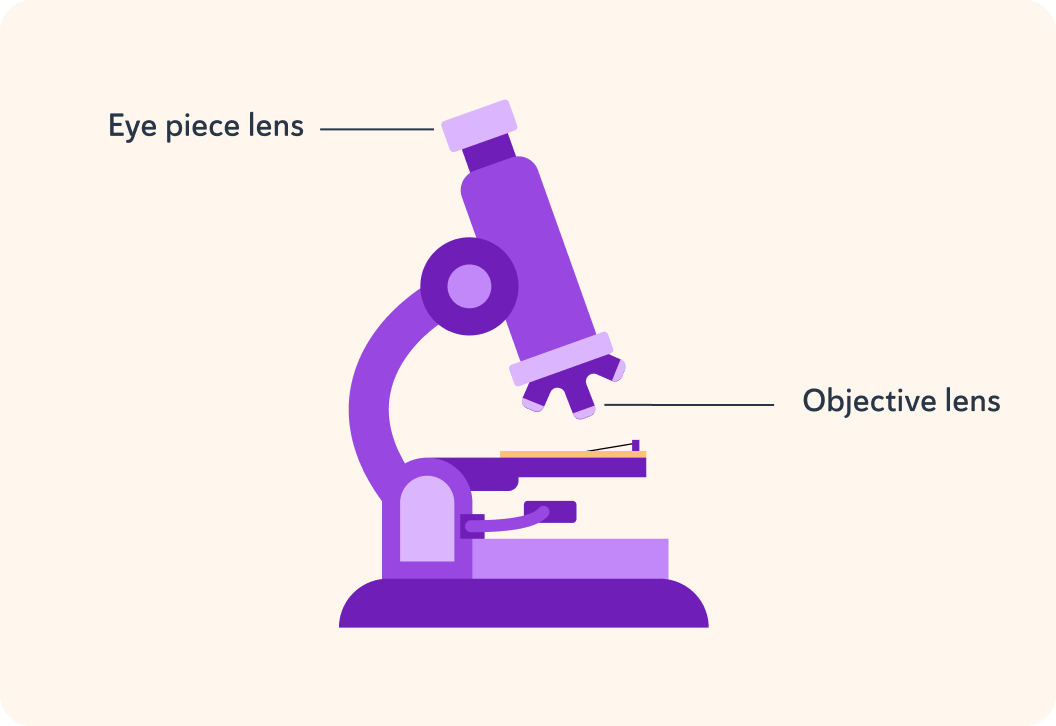
The objective lens and the eye piece lens work together
It was the Dutch that worked out that two lenses together could magnify an image better than a single lens alone, already in 1590!

What is the magnification of the objective lens here?

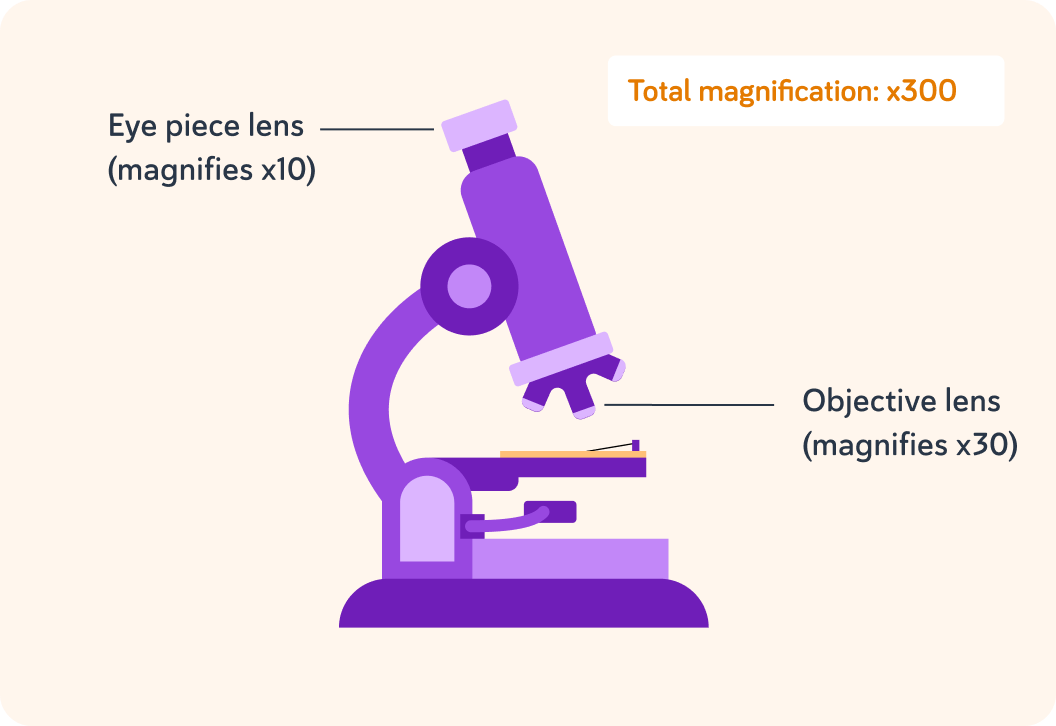
What is the magnification of the eye piece lens here?


The overall magnification is ×300, so you work out the overall magnification by ____________ the magnification of each of the lenses.
A) adding B) multiplying C) adding


What is the overall magnification here?

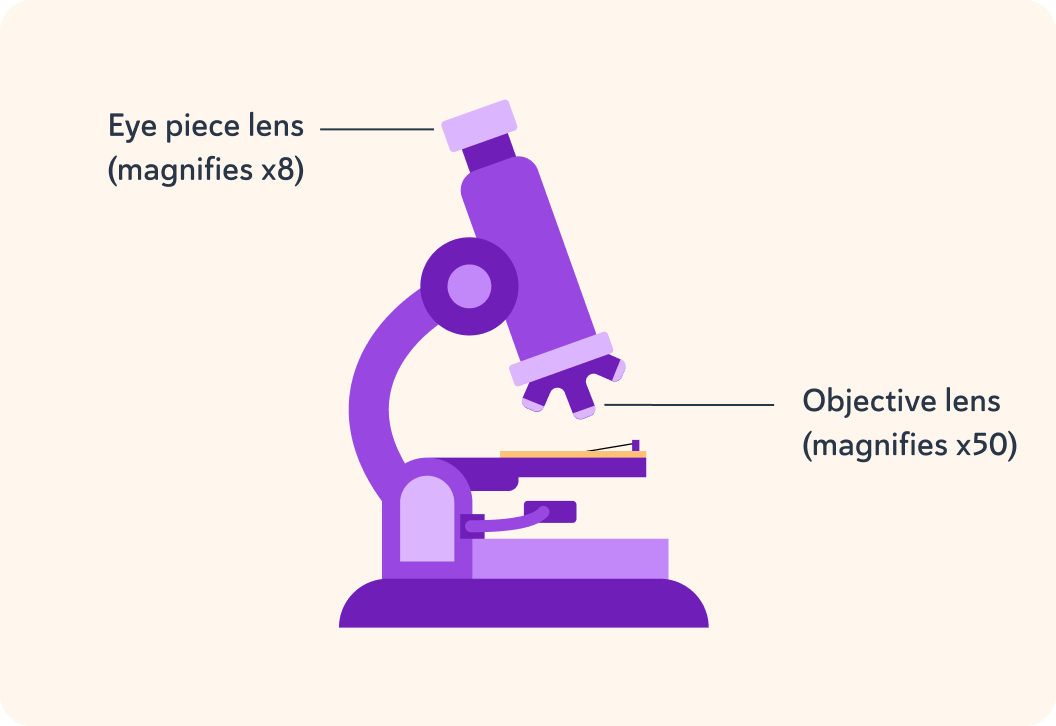
How much does the eye-piece lens magnify this image?

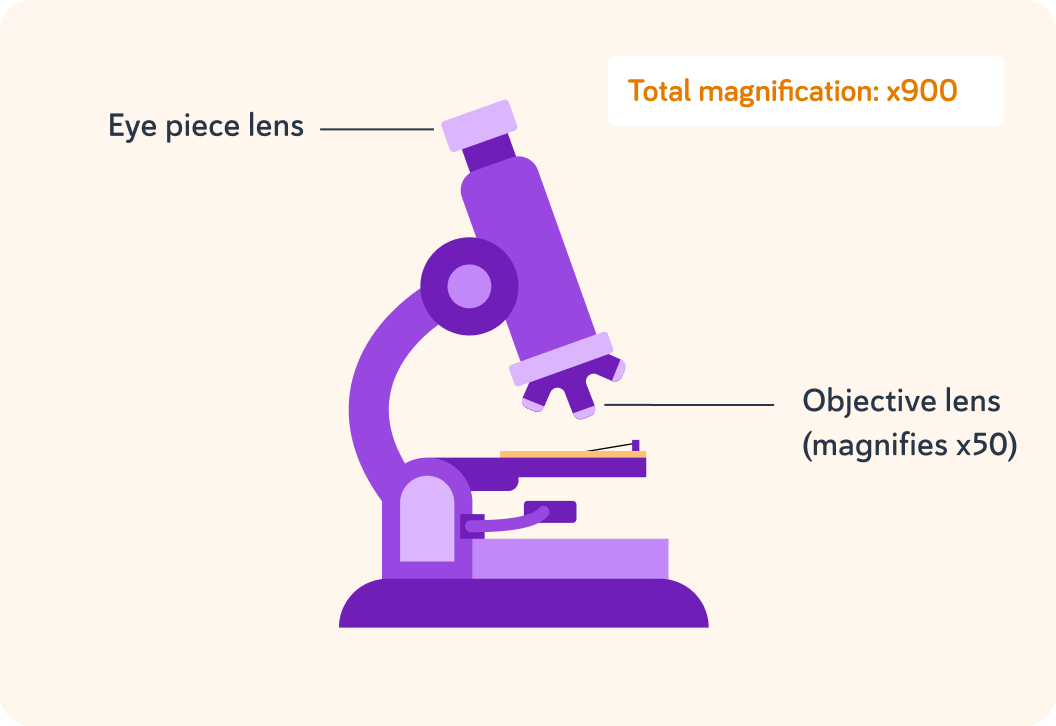
This microscope uses a light source
Today, light microscopes can magnify up to ×1,500
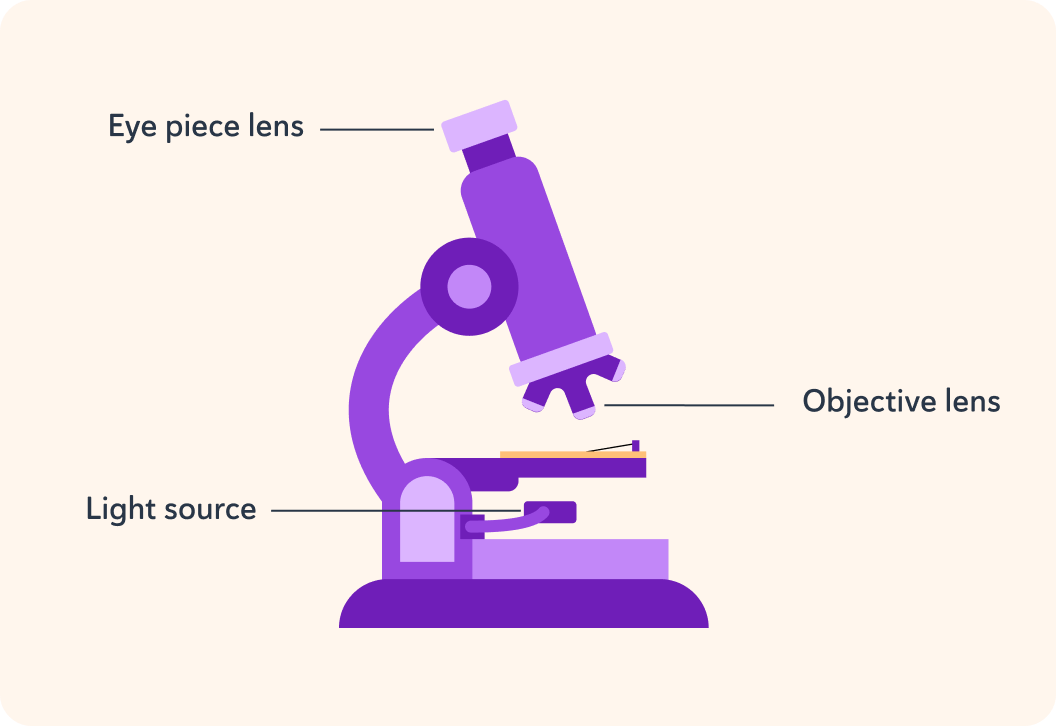
Magnification of ×1,500 means we can examine the details of the structures inside cells. With one word, these structures are called _____________.


This is the inside of an electron microscope
It uses beams of electrons to produce the image - it doesn't use light.
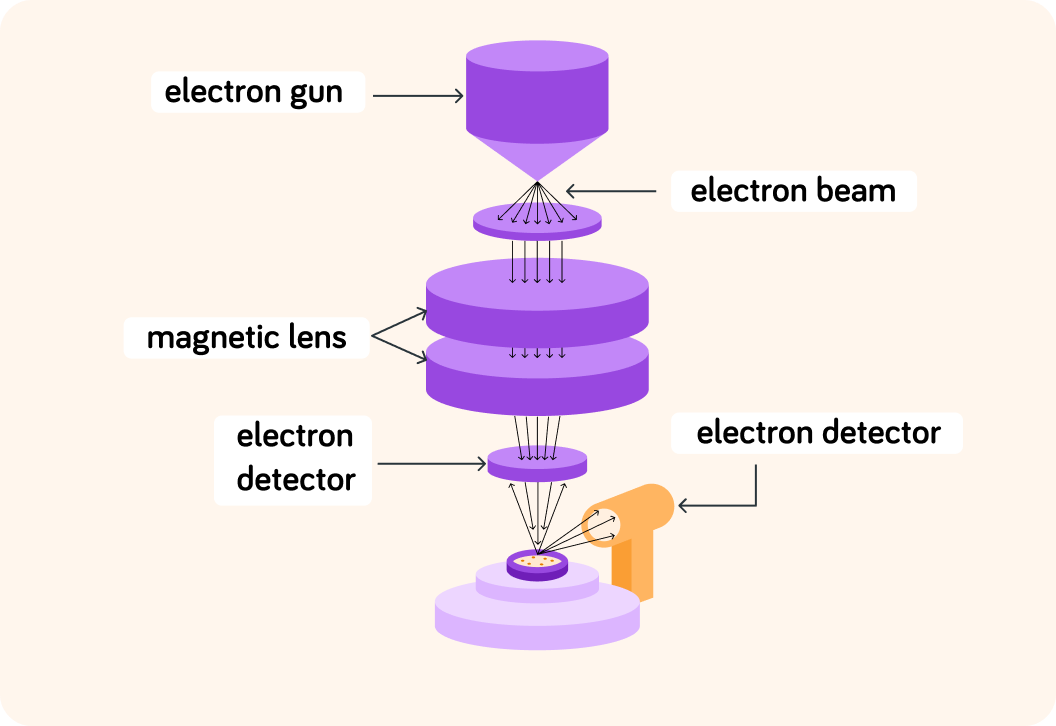
Electron microscopes can make things look a lot bigger than light microscopes so they allow for higher ____________.
A) magnification B) resolution


An electron microscope can magnify ×1,000,000!
Compare that to a light microscope that can't really magnify any more than ×1,500

Electron microscopes can also produce images in much finer detail than light microscopes, so they have much higher ____________.
A) magnification B) resolution


Electrons can tell objects apart that are only 1 nanometre from each other. How much is that in metres?
A) One thousandth of a metre B) One billionth of a metre C) One trillionth of a metre


So electrons can tell objects apart that are only 1 billionth of a metre, 1 nm, from each other!
Compare that to a good light microscope that needs objects to be 200 nm from each other to be able to tell them apart.

However!
The samples for electron microscopes have to be placed in a vacuum, and some need to be plated in gold.
This means you can't examine living samples under an electron microscope.

Pick all the correct options you think are correct: The advances in compound and electron microscopes have improved our ability to...

You can select multiple answers
Summary! Magnification and resolution
Magnification means to make things look bigger. Resolution is about how fine the detail in the image is.

Compound microscopes use two sets of lenses
You work out the overall magnification by multiplying the magnification of each of the lenses.
For example, if the objective lens magnifies ×30 and the eye piece lens magnifies ×10, then the overall magnification is ×300

Light microscopes
Can magnify up to ×1,500 They can tell things apart that are 200 nm from each other.

Electron microscopes
Can magnify ×1,000,000 They can tell things apart that are just 1 nm from each other.

However!
You cannot examine living samples under an electron microscope, because the samples have to be in a vacuum. Some even have to be plated in gold.

